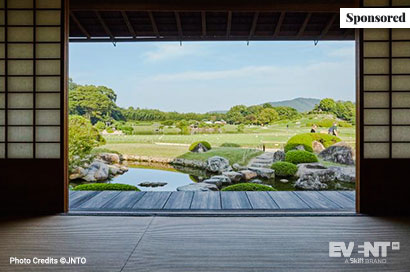Credits: ©JNTO
Although international travel may be severely limited right now, many eventprofs still have a job to do: some may be charged with planning conferences for the coming year, and others who work in the incentive travel field may be tasked with finding creative ways to engage team members while they await a future trip. When site visits and FAM trips are on hold, how can they feel confident in the choices they make?
While some destinations seem reluctant to update their business models, others are taking the pandemic in stride by facilitating tours and cultural exchanges online. One such destination, Japan, is leading this trend. The Japan National Tourism Organization (JNTO) is giving planners the tools for selection and engagement they need to make an informed decision and get buy-in from their stakeholders and prospective attendees.
These include offerings designed specifically for event professionals, with Meet Japan developing online versions of its annual hosted buyer event and incentive travel awards program. Additionally, JNTO has developed a number of virtual travel experiences that are just as applicable to corporate incentive trips as they are to traditional tourism.
Here are destination offerings that, having been rendered virtually, are significant assets to event planners.
Virtual Hosted Buyer Programs Bridge the Gap
Until on-site tours become a reality, destinations need to develop digital programs to deliver the same benefits. This not only means offering virtual tours of potential venues, but also connecting planners with local business professionals to begin the process of negotiation.
For its annual hosted buyers’ program, Meet Japan has organized a virtual event titled Online Meet Japan Edu. FAM. This virtual FAM trip caters to planners who are organizing international conferences with 100 attendees or more. It will be held over four days in January 2021, and planners are welcome to apply now.
The first day will consist of seminar presentations on event-related themes, and the following two days will be dedicated to virtual site visits. The final day of the event will be organized around remote business meetings, giving participants the chance to have one-on-one consultations with venue managers and other contacts from among the featured cities.
As an added incentive to participate in Japan’s online hosted buyer program, participants will be given priority for invitations to on-site hosted visits once they resume.


Credits: ©JNTO
Online Awards Shows Offer Inspiration Via Winning Examples
Being able to see a location is certainly critical to choosing a destination for an event, but many destinations offer seemingly unlimited options for off-site activities. Given the depth of knowledge that destinations have about past event successes, they are often pivotal in helping planners identify the particular offerings that will best serve their event needs. Award programs play no small part in this curatorial role, and it’s especially vital for destinations to continue highlighting successes when event planners aren’t able to experience potential activities for themselves.
JNTO, for example, is offering up examples of winning incentive trips with its online 2020 Incentive Travel Awards. Participants are all international planners who have organized an incentive travel trip in Japan, and all winning itineraries are posted on the JNTO’s website. Details about last year’s winning trips are currently available online. Applications to this year’s contest will close on September 16, 2020, and the winning entries will be posted sometime in December.
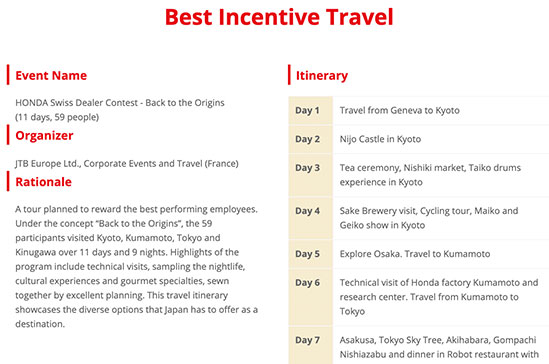

Credits: ©JNTO
Where better to look for inspiration?
For example, the last itinerary to receive the Best Incentive Travel award was organized for a Honda Swiss Dealer Contest around the theme of “Back to the Origins.” Honda was taking its top Swiss car dealers back to the company’s country of origin. With visits to Honda factories, a trip to the Honda Collection, and a racetrack excursion, attendees were taken on tours directly related to Honda’s business operations in its founding country. At the same time, participants were given insight into the culture that formed the backdrop to this origin story: leisure activities ranged from an ultra-traditional Taiko drum performance to an ultra-modern Robot Restaurant experience.
Virtual Tours Make Site Visits a Reality
With physical site visits an impossible ask, many destinations have turned to offering virtual tours of key sites and venues. These help planners to visualize and refine future events and incentive travel trips by allowing them to simulate being at the destination and experiencing what it has to offer.
Staple features of these tours include the ability to walk around, explore points of interest, and access contextualized information. JNTO’s Japan 360° program has taken guided video tours a step further by creating virtual walk-through experiences for heritage sites, natural wonders, and public institutions — several of which even provide options to adjust the scene to explore the area by day or night or in different seasons.
In a world where the odds of having to postpone events is a real concern, the ability to design experiences for all seasons might be a priority for some planners.
While Japan 360° does provide a unique way to access some of the country’s top attractions, choosing a destination is never just about the act of looking alone. For business events in particular, interactivity should be a key component.
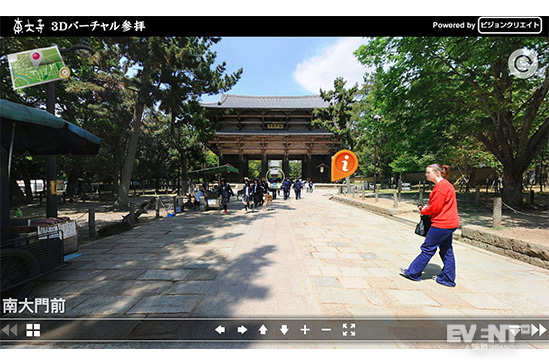

Credits: ©JNTO
Virtual Tours Can Be Used to Engage Audiences
Virtual tours are not just a stop-gap resource for event planners who really wish they were onsite. They also serve as a tool that planners can use to engage attendees, build momentum and excitement around a future trip, and generally make stakeholders feel more invested in the decision-making process.
Would attendees or stakeholders prefer to visit a Buddhist temple or a cave for an off-site activity?
Japan 360° offers attendees a chance to sample sites in three main categories: temples and shrines, nature, and museums. Event planners can design activities that take advantage of this technology.
For example, encourage prospective attendees to explore specific tours and then share the parts that they enjoyed most. The virtual platforms for the Miyajima Islands and the Makido Cave allow ‘visitors’ to share images from the tour to a number of different social media channels. At any given point in the tour, virtual visitors can simply hit the ‘share’ icon to post an image from that exact spot. Using this feature, team members could share their favorite sites, and others could vote on them using likes.
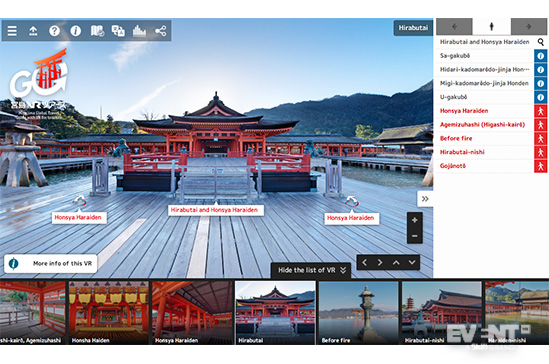

Cultural Experiences Online Offer Engagement at Many Levels
Interactive cultural experiences serve much the same purpose as virtual tours. Engaging in these experiences can help event planners gain an understanding of what a destination has to offer for their trips, and can also serve as an important source of inspiration when visiting the destination is not permitted.
Moreover, a chance for attendees and other stakeholders to share these experiences represents not only a way to engage with a destination that has already been chosen, but also to include them in the decision-making process in a way that would not be possible with physical FAM trips.
While destinations have traditionally helped event planners to arrange local in-person activities, JNTO has expanded this role to the online sphere. Their Experience Japanese Culture Online program facilitates remote cultural experiences by providing a curated list of online services.
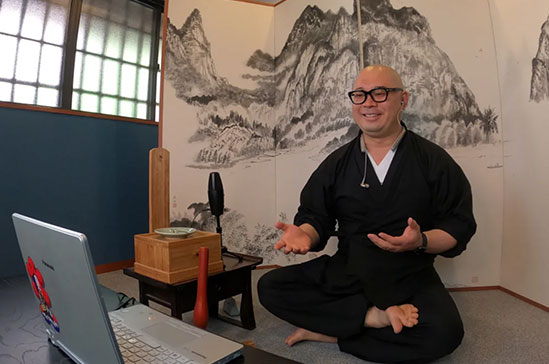

Credits: ©JNTO
Online Courses Turn Interactive Experiences Into Cultural Insights
Online courses are particularly effective for this purpose as they have built-in developmental incentives for participation. Learning about a culture can translate to practical skills and real-life benefits for participants, and this is a great way to make them feel both invested in group activities and connected to the destination.
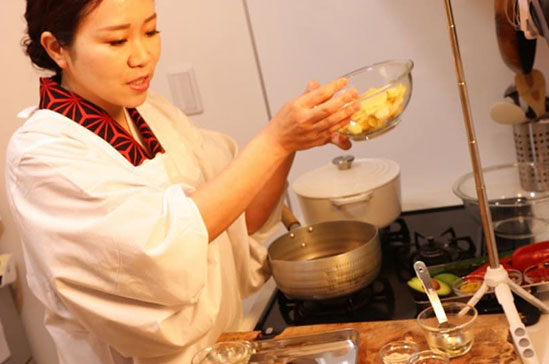

JNTO’s Experience Japanese Culture Online program provides links to online courses in Zen meditation and Japanese cooking. For those thinking of including an excursion to a Buddhist temple as part of a C-suite business event, a lesson on Zen meditation could allow for a deeper appreciation of the temple’s cultural significance. According to the JNTO website, the monk who leads the sessions typically starts with a brief introduction on Zen Buddhism.
When it comes to basic life skills, cooking ought to be another top priority and has been experiencing something of a Renaissance during lockdown.
Culinary adventures are also a fundamental part of exploring any new destination, and there are few activities that generate a stronger sense of team bonding than cooking and eating together — even if it’s all done over Zoom.
While the cooking classes advertised by JNTO are capped at four participants, the advantage of these smaller classes is a more intimate experience where participants can ask questions along the way. For all these reasons, a Japanese cooking class may be an effective way to keep team members engaged while motivating them with the prospect of future events hosted in Japan.
Enhance Remote Meetings With Virtual Geisha Sessions
As some destinations have demonstrated, virtual cultural exchanges can offer more than a means to generate inspiration and buy-in for future events; they can also function as a mechanism for engagement at current virtual events.
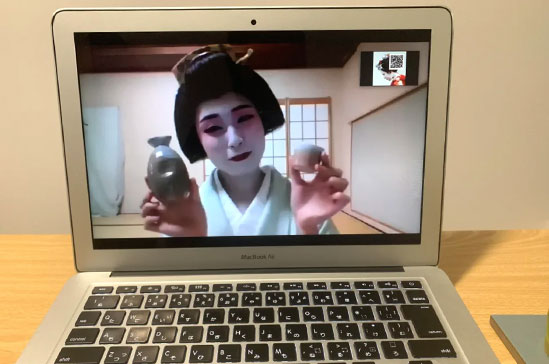

Credits: ©JNTO
The Experience Japanese Culture Online campaign, for example, allows planners to book a remote meeting with a Geisha (often called “Geiko” in Kyoto) through Meet Geisha. As the JNTO website suggests, this kind of cultural exchange helps to remove any misplaced associations between Geishas and courtesans, while also revealing the profession’s core skills: singing, dancing, and the art of hospitality — or ‘omotenashi.’ Geisha sessions can be customized to emphasize any one of these special skill sets.
This notion of hospitality encompasses proper etiquette for tea ceremonies along with a repertoire of traditional Japanese games. These interactive experiences could be incorporated into a virtual event by, for example, sending attendees a starter tea kit and creating a memorable experience around a relaxing tea ritual.
IN CONCLUSION
For planners looking for exciting ways to engage their online audiences, it is crucial that destinations develop innovative ways to deliver their services remotely. These online campaigns serve the dual purpose of enhancing virtual events while facilitating the planning process for future in-person events.
As JNTO and Meet Japan have demonstrated, all of these online offerings can function as event-planning tools:
- The Online Meet Japan Edu. FAM event facilitates virtual tours and meetings with prospective partners in key Japanese cities.
- The Incentive Travel Awards provide recognition for the industry’s best examples, which can in turn inspire ideas for future trips.
- Japan 360° gives eventprofs a new engagement tool and an immersive way to explore potential travel destinations.
- Experience Japanese Culture Online provides helpful links to cultural resources that can both engage and inform corporate team members.
We may be limited by travel restrictions for the time being, but it is still possible to keep would-be travelers engaged remotely.

